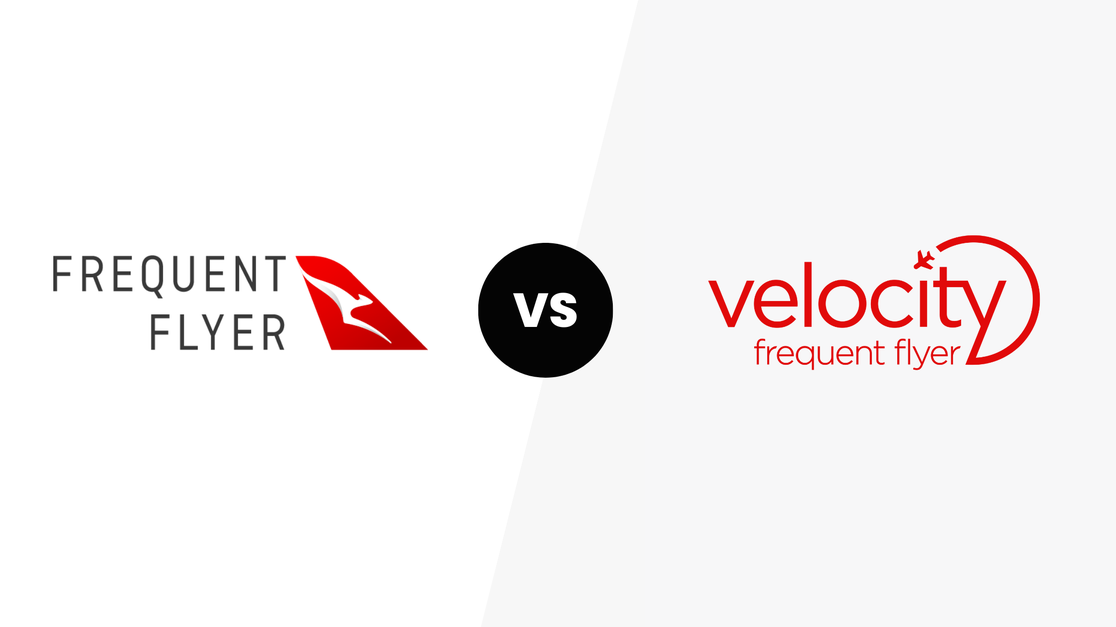There are two major players in the Australian frequent flyer market: Qantas Frequent Flyer and Virgin Australia's Velocity Frequent Flyer. Both programs offer rewards and perks for frequent flyers. Which is the best fit for you?
In this article, we'll break down both programs and do a full comparison, so you can decide which one best suits your travel needs and where to build points.
Is your credit card paying its way? Check the latest frequent flyer credit card offers.

Coming up next
Key takeaways
- Joining Virgin Australia's Velocity Frequent Flyer program is free, whereas the Qantas Frequent Flyer program has a joining fee of $99.50 (although that is easily circumvented).
- Qantas Frequent Flyer program offers a broader range of destinations and is a member of oneworld, providing more options for connected bookings with other airlines.
- Redeeming points for reward flights and carrier surcharges varies slightly between the two programs. It's important to consider the type of flight and class you're redeeming.
- Both programs offer similar opportunities for earning points, family sharing options and status tiers, but the Qantas Frequent Flyer program has a shorter points expiration period of 18 months compared to Virgin Australia's 24 months.
Joining fee
The Qantas Frequent Flyer joining fee is $99.50, whereas Virgin Australia's Velocity Frequent Flyer program is free. However, Qantas regularly runs promotions with its brand partners for free memberships. Existing frequent flyers can also invite their family members to join for free. Signing up for a Qantas frequent flyer credit card or a Qantas travel money card also offers complimentary membership.
Winner. Velocity Frequent Flyer wins on this factor as it has no joining fee.
Travel destinations
Qantas flies to over 65 destinations domestically and 27 destinations internationally, to more than 15 countries. Virgin Australia reaches 25 domestic locations and 23 international destinations across North America and the Asia Pacific. These numbers have fallen considerably compared with the pre-COVID situation, but both airlines plan to expand their current offerings to include more pre-COVID routes.
Qantas has the advantage of being part of the oneworld alliance, which allows for connected bookings with other airlines. Virgin Australia, on the other hand, doesn't have any alliance memberships but does have partnerships with major airlines such as Singapore Airlines, Qatar Airways, United Airlines, ANA, Air Canada and Hawaiian Airlines.
Winner. On travel destinations, Qantas wins due to its broader range of destinations and alliance membership.
Partner airlines and alliance
Qantas is a member of oneworld, allowing for connected bookings with other airlines. Although Virgin Australia is not in an airline alliance, it has partnerships with major airlines such as Singapore Airlines, Qatar, and ANA.
Winner. Qantas takes this round due to its alliance membership and a broader range of partner airlines.
Earning points (non-credit card)
Both programs offer similar opportunities to earn points through flying and other activities such as shopping, dining, signing up for services and utilities, etc.
Winner: Qantas takes a slight lead here since there are so many opportunities to earn points.
Earning points (with a credit card)
There are credit cards to earn either Qantas Points or Velocity Points. But if you like choice and/or want to churn sign up offers, there really can be only one winner here.
Winner. Qantas is the clear winner. Even smaller banks and credit unions offer credit cards that earn Qantas Points.
Redeeming points
The cost of redeeming points for reward flights and carrier surcharges varies slightly between the two programs.
Qantas requires around 8% fewer points for long-haul international Economy flights, but more points than Virgin for Premium Economy and Business Class redemptions. Virgin Australia's surcharges are generally lower compared to Qantas.
Winner. This section is a draw as it depends on the flight type and class you redeem points for.
Status tiers
Qantas has five tiers: Bronze, Silver, Gold, Platinum, and Platinum One. Virgin Australia has four tiers: Red, Silver, Gold and Platinum. The higher the tier, the more benefits and perks like priority check-in, lounge access and bonus points you'll receive.
Winner. This section is a draw as it depends on personal preference and travel needs.
Points expiration
Qantas Frequent Flyer points expire after 18 months of account inactivity, whereas Velocity Frequent Flyer points expire after 24 inactive months. However, it's possible to reclaim Qantas Points that have expired through a Qantas Points Challenge. Expired Velocity points, on the other hand, cannot be recovered.
Winner. Virgin wins this section as it has a longer expiration period for points.
Family sharing
Both programs allow family members to share points. In the case of Qantas this amounts to an extensive list of family members to whom points can be transferred, including in-laws and first cousins. Virgin Australia allows up to six family members living at the same address to link their accounts and share status credits and benefits such as lounge access and priority check-in.
Winner. Both programs offer family sharing options, although the details vary, so they draw.

And the winner is?
Best overall
Based on the above comparison, the Qantas Frequent Flyer program comes in as the overall winner with wins for travel destinations, partner airlines and alliances, and earning points.
In the end, the overall winner will depend on personal travel needs and preferences. Virgin Australia's Velocity Frequent Flyer program is still a great option and worth considering before making a decision on which program to sign up with.

